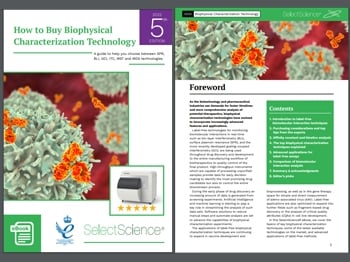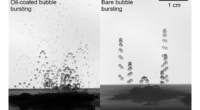Biophysical characterization technology plays a vital role in the biotechnology and pharmaceutical industries as it provides detailed molecular interaction analysis. Label-free assays are also becoming essential in drug discovery, development, and manufacturing workflows for biotherapeutics. They provide real-time data and lead to higher workflow efficiencies. Several biomolecules such as therapeutic proteins, monoclonal antibodies, bispecific antibodies, and antibody-drug conjugates can be quantified and characterized using biophysical characterization techniques such as surface plasmon resonance, bio-layer interferometry, isothermal titration calorimetry, and more.
When purchasing biophysical characterization technology, cost and ease of use are two critical factors to consider. It’s essential to evaluate not just the initial purchase price but also the operating costs such as consumables and maintenance. Furthermore, ease of use should also be evaluated, and efficiency should be kept in mind. To learn more about the top biophysical characterization techniques, their advantages and drawbacks, along with expert insight on available technologies and advanced applications for label-free assays, download the free eBook on “How to Buy Biophysical Characterization Technology.”
A Guide to Biophysical Characterization Technology
Biophysical characterization technology is becoming increasingly essential in the biotechnology and pharmaceutical industries. With the need for more thorough analysis of potential therapeutics, these instruments can provide detailed characterization of molecular interactions. The latest technologies in biophysical characterization have advanced features that reduce manual steps and increase sensitivity for a wide range of applications.
Label-free assays are being utilized in drug discovery and development, as well as in the manufacturing workflow of biotherapeutics. Biophysical characterization technologies measure molecular binding without using labels, which allows for real-time data. These assays are an efficient approach to collecting a wide range of information related to the interaction of biomolecules, such as concentration, biosimilarity, specificity, potency, and selectivity of the molecular binding. Consequently, these assays lead to higher workflow efficiencies.
Several types of biomolecules can be reliably characterized and quantified with biophysical characterization techniques, including therapeutic proteins, monoclonal antibodies (mAbs), bispecific antibodies (bsAbs), and antibody-drug conjugates (ADCs). Common techniques used in biophysical interaction include surface plasmon resonance (SPR), bio-layer interferometry (BLI), isothermal titration calorimetry (ITC), microscale thermophoresis (MST), microfluidic diffusional sizing (MDS), and grating-coupled interferometry (GCI).
To determine the right biophysical characterization technology for your research, keep three overarching principles in mind: flexibility, cost, and ease of use. When selecting a system, ensure that it has the flexibility to upgrade throughput, run experiments based on other molecule combinations, or transfer the same sample to another technique. Additionally, consider the cost and ease of use of the system to eliminate purchase regrets.
If you want to learn more about biophysical characterization technology, the SelectScience eBook provides a comprehensive guide to the basics of key biophysical characterization techniques, some of the latest available technologies on the market, and advanced applications of label-free methods. Additionally, the eBook offers tips on selecting the best biophysical characterization technology for your research needs.
Factors to Consider When Purchasing Biophysical Characterization Technology
When purchasing biophysical characterization technology, cost and ease of use are two critical factors to consider. In terms of cost, it’s essential to evaluate not just the initial purchase price but also the operating costs such as consumables and maintenance. This ensures that the purchasing decision is well thought out and that the equipment fits your budget.
In addition to cost, ease of use should also be evaluated, and efficiency should be kept in mind. While intuitive software benefits nearly every buyer, other features may slow you down and limit the number of people that can use the instrument.
To learn more about the top biophysical characterization techniques, their advantages and drawbacks, along with expert insight on available technologies and advanced applications for label-free assays, download the free eBook on “How to Buy Biophysical Characterization Technology.”
Don’t miss interesting posts on Famousbio










